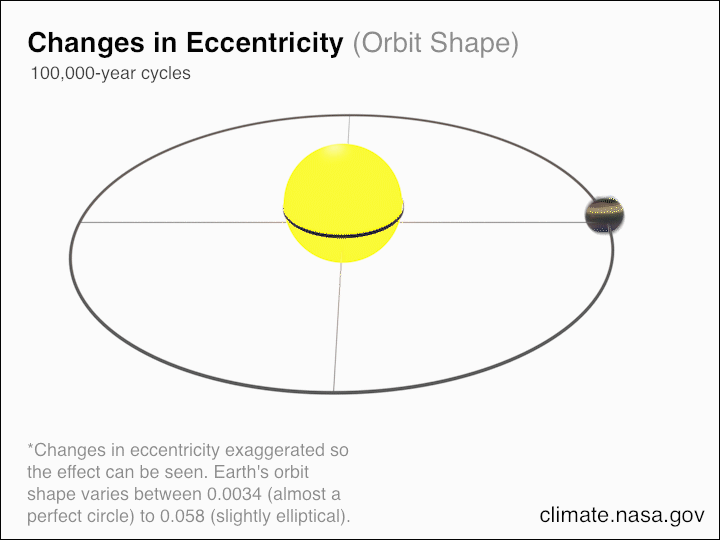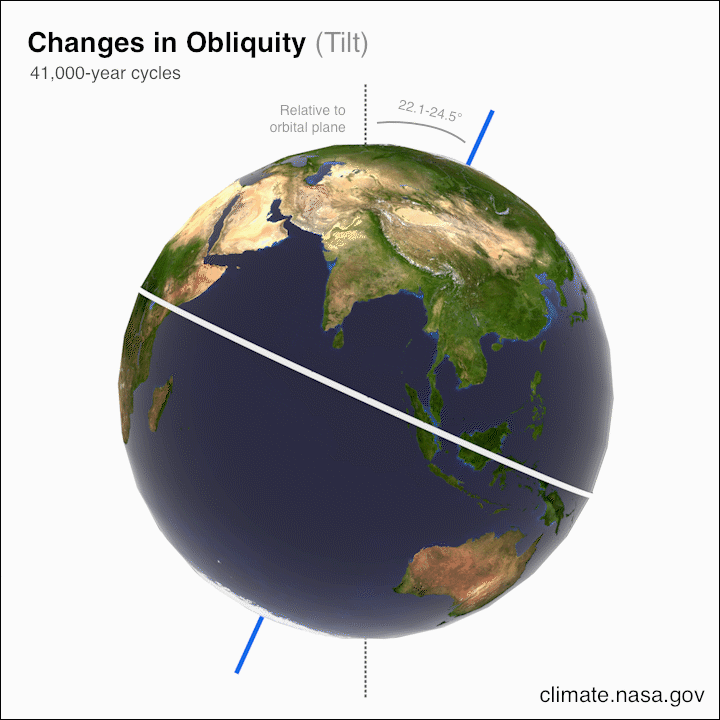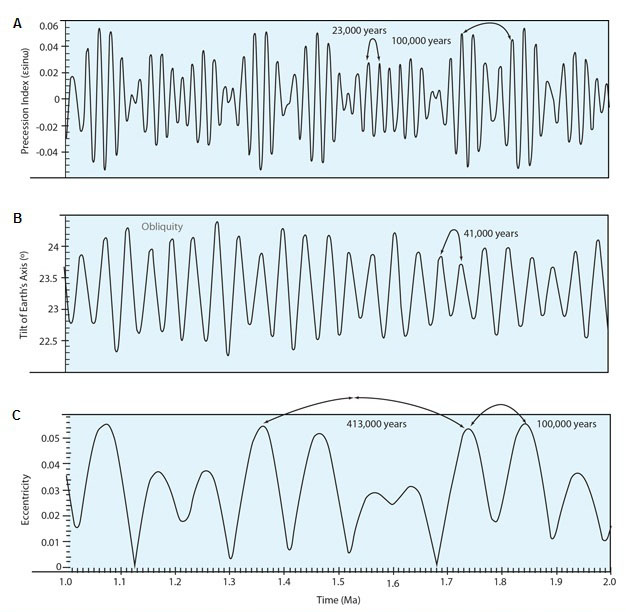Causes: Milankovitch Cycles
Fig. 5: Each cycle occurs over different time frames. When they coincide, the effects are multiplied. Factors such as plate tectonics (see Video 1) and the balance of the carbon cycle can exaggerate, reduce, or cancel the effects of the Milankovitch Cycles over thousands or millions of year. (Image: The Nature Education Project)
Video 1: The Milankovitch Cycles are changes in the Earth’s orbit and rotation that cause the Earth’s climate to change over hundreds of thousands of years.
Video 2: This follow up video explains where we are within the cycles now and how this relates to greenhouse gases.






